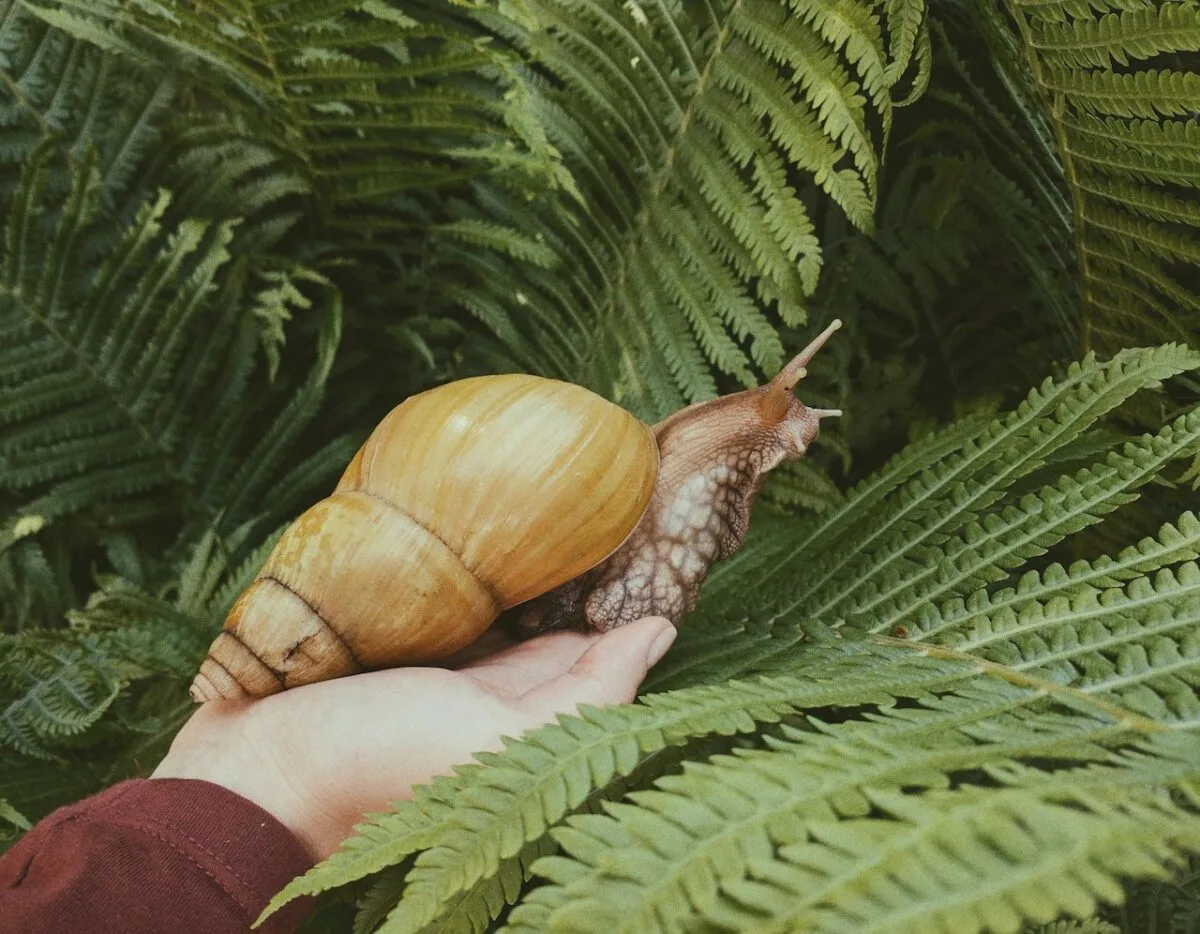The world’s largest land snail on our planet is the astounding African Giant Snail.
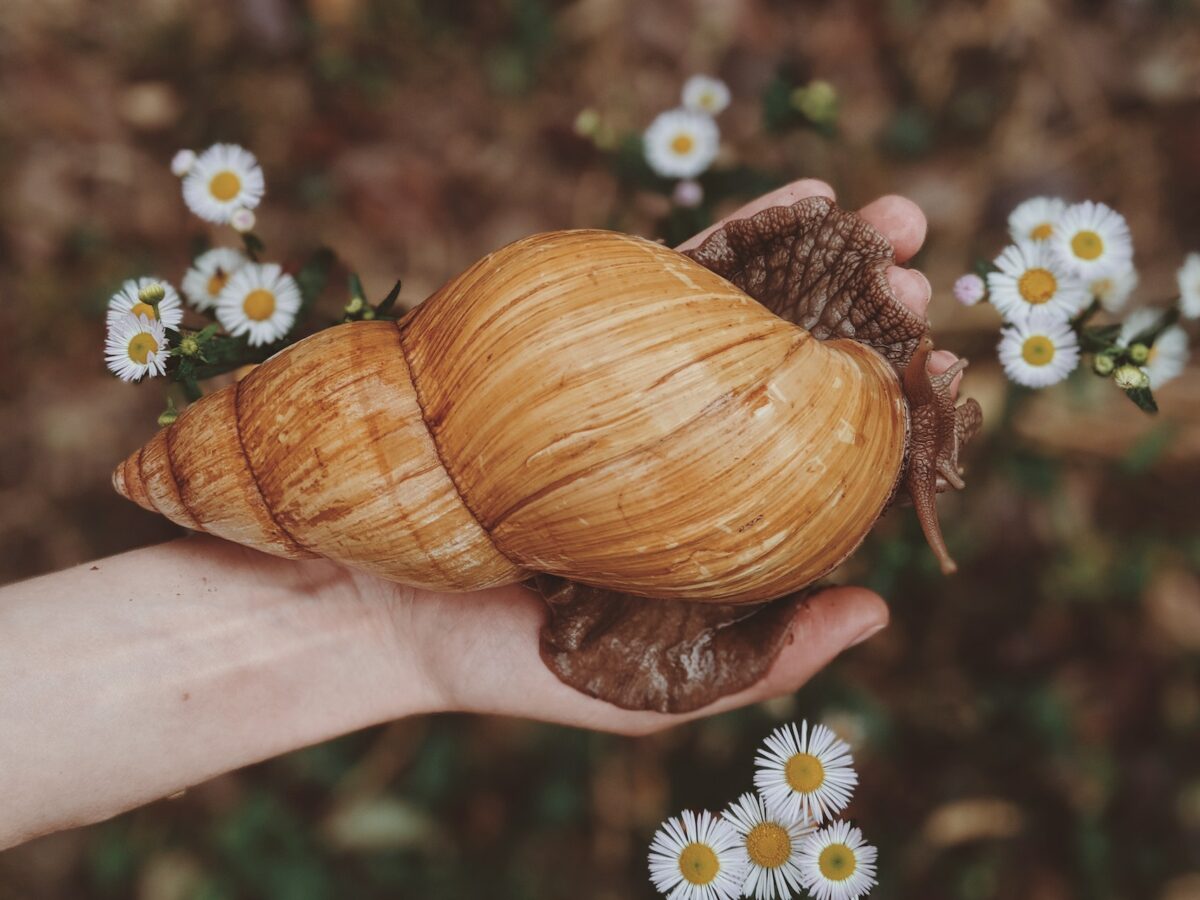
The African giant snail, scientifically known as Achatina fulica, is a remarkable gastropod mollusk that hails from East Africa. With its impressive size and distinctive shell, this snail species has become renowned for its voracious appetite and remarkable adaptability.
Get ready to embark on an extraordinary adventure as we unravel the mysteries of the African Giant, the largest land snail in the world. Prepare to be amazed by its remarkable size and unique attributes.
Let’s dive into the enchanting world of this captivating creature, exploring its fascinating features and discovering what sets it apart from the rest.
Key Points
- African Giant snails can grow up to 8 inches in length and weigh up to 1 pound.
- They have a spiral-shaped shell with caramel and chocolate-brown stripes.
- African Giant snails have a muscular foot for movement and distinctive head with tentacles.
- Their shells have a calcium carbonate exoskeleton and feature spaced-out ribs.
- African Giant snails are adaptable to various habitats and have both benefits and threats to the environment.
Physical Features of the World’s Largest Land Snail
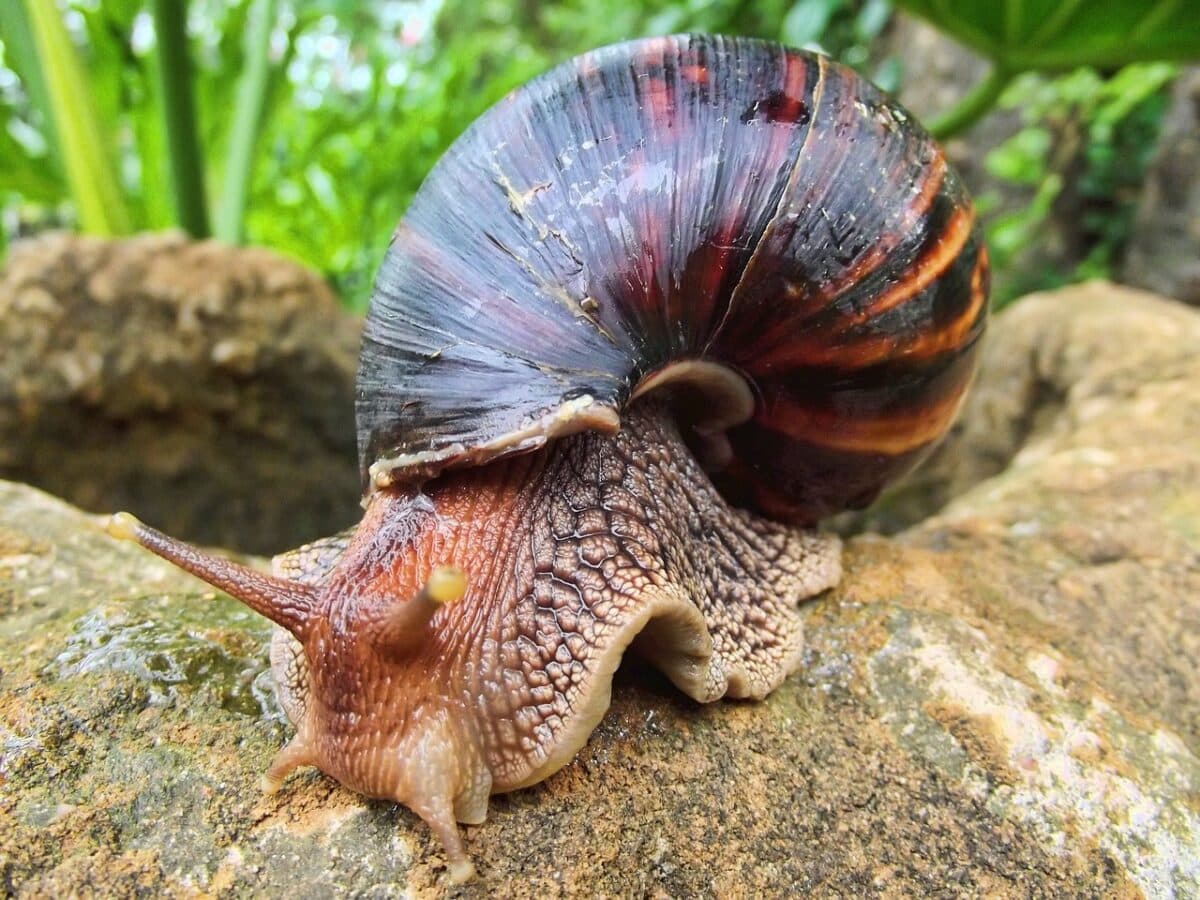
If there’s one thing that makes the African Giant snail stand out from the rest, it is its sheer size. These massive creatures get their name for a reason – they can grow up to an impressive 8 inches (20 centimeters) in length and up to 11 inches (30 centimeters) in height! Moreover, they can weigh up to 1 pound!
Get to know the world’s largest arthropod: The Coconut Crab.
Spiral-Shaped Shell
But their size isn’t the only remarkable thing about them. The African Giant snail has a unique appearance, of its spiral-shaped shell and deep caramel and chocolate-brown stripes. Some even have a creamy-white color that makes them look even more fascinating.
Muscular Shape Foot
Looking closely at their anatomy, you’ll notice that they have a muscular foot that they use to move around. They also have a distinctive head with two pairs of tentacles – one for sight and the other for their sense of smell. The upper tentacles are longer than the lower ones, and you may even notice their black eyes at the tips of these tentacles.
Exoskeleton
Regarding their shell anatomy, the African Giant snail has an exoskeleton of calcium carbonate, like most snails. The shell is mostly flattened, with a spiral whorl that begins at the top and goes to the bottom. Spaced-out ribs run horizontally along the shell, and when they grow older, they produce a lip called a “marginal lamella.”
Habitat and Distribution
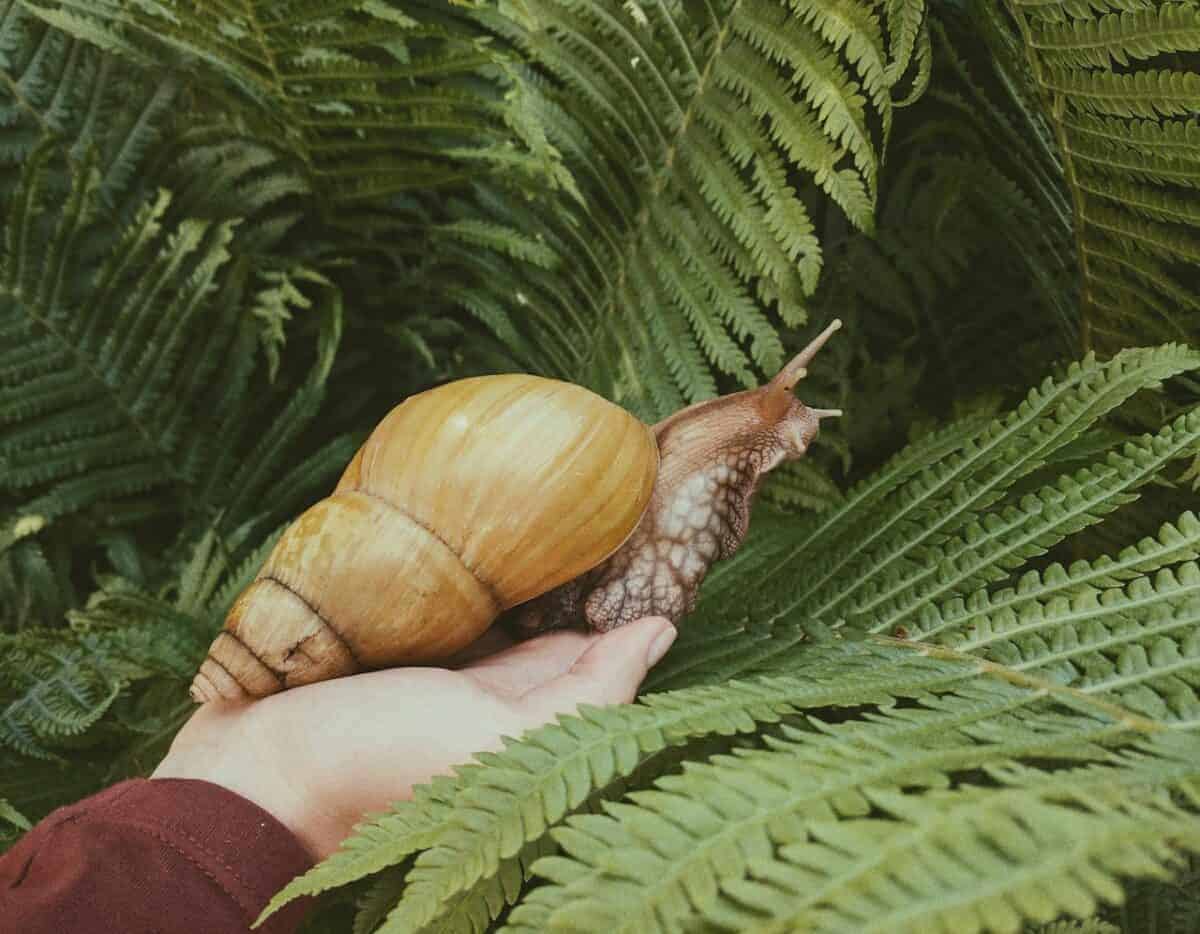
It’s not just their size and unique physical features that make them so interesting – where they live and how they affect their environment are equally intriguing.
Natural Habitat: Remote Forests Or Gardens?
Despite their name, African Giant snails can be found in various habitats. They are native to East Africa but have now spread to many other regions worldwide, including Asia, the Caribbean, and South America. The African Giant snails thrive in various habitats, ranging from lush forests and damp swamps to human-altered landscapes like gardens, farms, and urban areas.
Their adaptability allows them to flourish in both natural and artificial environments, making them versatile and widely encountered species. Whether it’s the depths of the forest or the gardens right outside our homes, these incredible snails have made their presence known in diverse habitats worldwide.
Ecological Impact: Benefits and Threats To the Environment
While the African Giant snail can cause harm to the environment in some cases, they also have some surprising benefits. For example, their waste can be used as a fertilizer, and sometimes even used to control other pests in certain crops. They also play an important role in recycling organic matter in soil and helping to maintain moisture levels in environments where they live.
Diet and Nutrition
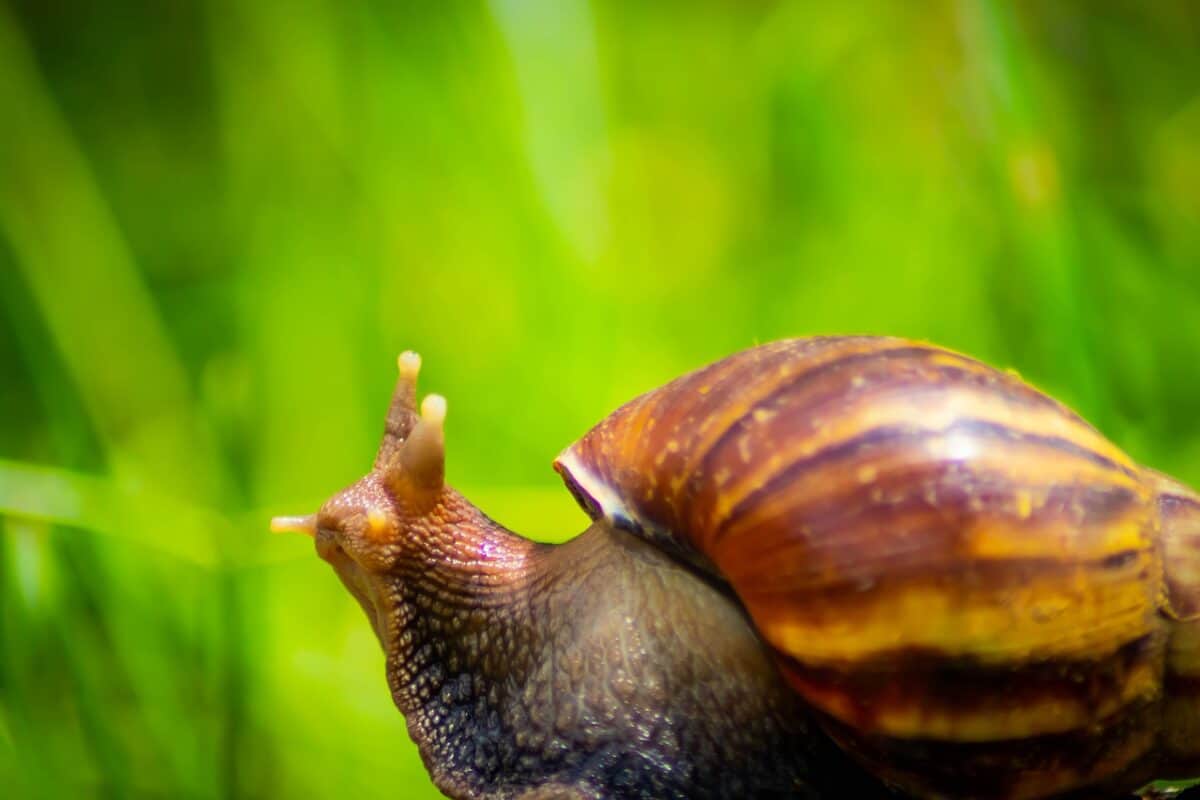
Have you ever wondered what the largest land snail likes to munch on? Let’s find out!
Herbivorous Appetite: The African Giant’s Favorite Foods
As a herbivore, the African Giant snail loves to chow down on a wide range of plant matter (there are up to 500 different types of plants that the world’s largest land snails enjoy munching on.) These include:
- Leaves
- Fruits
- Flowers
- Bark
- Stems
- Fungi
However, they have some particular favorites! Some of their most-loved greens include lettuce, kale, and cabbage. They also have a sweet tooth and enjoy fruits like mangoes and strawberries.
How The African Giant Snail Feeds
The African Giant snail is a slow and steady eater who takes time to enjoy its meals. They have a rasping tongue called a radula, which they use to scrape away at their food. The radula is a specialized organ with rows of tiny teeth, used to scrape and devour leaves, fruits, vegetables, and even bark.
Additionally, they have a habit of returning to previously eaten plants, which can cause damage to crops. Despite this, the African Giant snail plays a vital role in the ecosystem, acting as a natural decomposer and fertilizer.
Remarkably, these snails can devour large quantities of food, sometimes exceeding their own body weight, making them prodigious eaters.
You might also enjoy: The Largest School of Fish Ever Witnessed.
Behavior and Reproduction
African Giant snails are known for their fascinating behavior and unique reproductive techniques. These creatures have both male and female reproductive organs – meaning that they are hermaphrodites and can produce eggs and sperm simultaneously.
Regarding their behavior, African Giant snails are nocturnal creatures that prefer to stay out of sight during the day. They are excellent climbers and can often be found scaling trees or other objects in their environment. In addition, they are highly adaptable and can survive in a wide range of habitats, from tropical rainforests to coastal plains.
While African Giant snails are generally solitary creatures, they engage in certain social behaviors. For example, they have been observed communicating using chemical signals. By releasing pheromones into the environment, they can attract potential mates and warn others of danger.
In addition, African Giant snails have a unique way of marking their territory. They produce a slimy secretion to create a trail as they move through their environment. This trail helps them find their way back home and serves as a marker for other snails to avoid.
How Are Giant Snails Harmful to Humans?
Although impressive, the world’s largest land snail can pose a significant danger. They can endanger humans, agriculture, and the environment in general due to their invasive nature, large size, and the diseases it can carry.
Firstly, these snails are considered highly invasive. They thrive in a variety of habitats with mild climates and feed voraciously on over 500 varieties of plants, leading to severe damage to agricultural crops and native plants. They can also compete with native snail species and cause issues in urban areas. Because of their potential to wreak havoc on ecosystems, the African Giant Snail is listed as one of the top 100 invasive species in the world.
Secondly, the African Giant Snail can carry several diseases that pose risks to human health. Notably, they are vectors for the rat lungworm parasite, which can cause a potentially fatal form of meningitis in humans. In addition to this, the snails can carry Salmonella and other harmful bacteria.
Cultural Significance
In many cultures, African Giant snails hold a special place as symbols of fertility, healing, and good luck. They are often featured in traditional artwork and folklore, and their shells are used in jewelry and other decorative items.
Additionally, African Giant snails have been used in traditional medicine for centuries. Their slime is believed to have antibacterial and anti-inflammatory properties and is used to treat various ailments, from skin irritations to digestive issues.
FAQs About African Giant Snails
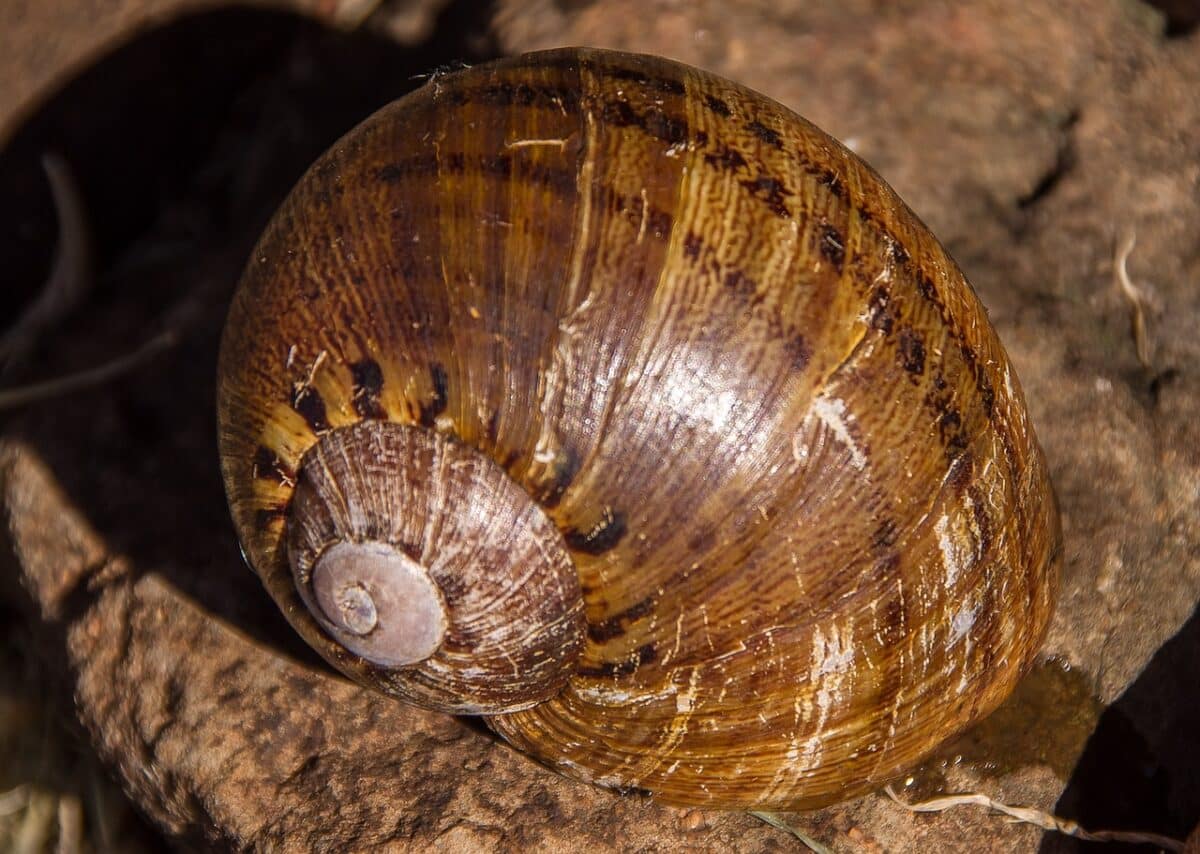
The giant African snail (Achatina fulica) is not poisonous to humans, but it can be harmful in other ways as it is an agricultural pest that can damage crops and plants, and it can also carry parasites and diseases that may pose risks to human health.
African giant snails are prolific breeders and can lay eggs multiple times a year. Under favorable conditions, they may lay clutches of eggs every two to four weeks, with each clutch containing around 100 to 400 eggs.
They are particularly drawn to decaying organic matter, moist environments, and calcium-rich materials like limestone or concrete, which they consume to support shell growth.
African giant snails, or Achatina fulica, have a lifespan of approximately 5 to 10 years in the wild. However, under optimal conditions in captivity, they can live even longer, with some individuals reaching up to 15 years or more.
The World’s Largest Land Snail: Closing Thoughts
The African Giant is a marvel of nature that deserves our utmost respect and admiration. Its unique characteristics, such as its large size and impressive lifespan, make it a fascinating creature.
We hope this article has given you a better understanding and appreciation of the African Giant. So, the next time you come across this magnificent snail, you’ll know how incredible it is!
Thank you for reading this article about the world’s largest land snail! Explore more mysterious invertebrates: the toughest creature on Earth, the lethal cone snail bite, or get to know the blue-ringed octopus.
Join our Forum for free today!


